When to stop watering onions and why?
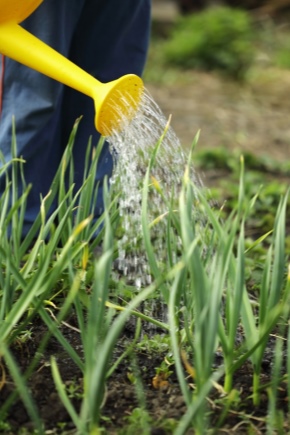
Onions are a rather unpretentious culture. It usually yields well with little maintenance. A lack of moisture or an excess of it negatively affects the appearance of the onion heads. Today we'll talk about when to stop watering onions, and why you should do it.
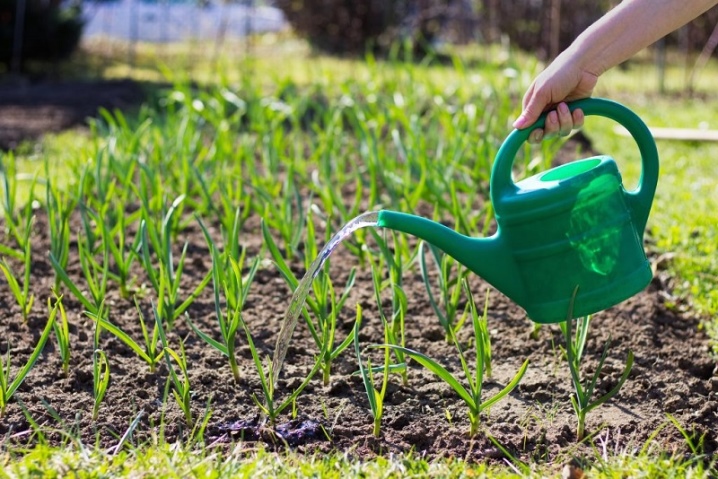
Watering end time
Onions are a fairly unpretentious crop. Often it is not recommended to water it, so as not to lose a significant amount of the crop. When overflowing, the heads become small, often rot. All the power goes to the pen.
There are no specific recommendations for the procedure. Unlike other vegetable crops, you can water onions without fear of breaking the leaves. When watering with a watering can, water is poured from above.
According to folk signs, the heads should stop watering on the day dedicated to the apostles Peter and Paul. It is celebrated by Orthodox Christians in mid-July. According to the calendar, the holiday is celebrated on the 12th day of July.
Stop watering before harvesting the onions after the heads are fully ripe.
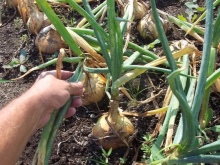

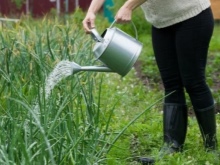
Usually, stop watering the onion beds about 3 weeks before the onion is harvested. At this time, the feathers should be on the ground. Usually 2-2.5 months pass between the appearance of the first shoots and the harvest.
If the weather is hot and dry, it is recommended to irrigate the soil a little. Otherwise, this will lead not only to the drying out of the soil, but also prevent the head from reaching large sizes.
Professionals say: when to stop watering the onion on the head depends on when the planting was carried out, and when the first shoots appeared. An important point is also what weather conditions were established during the ripening of the culture.
In cloudy and rainy times, it is recommended to throw plastic wrap on the beds.
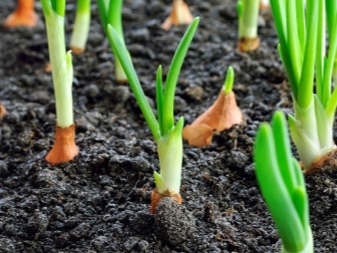
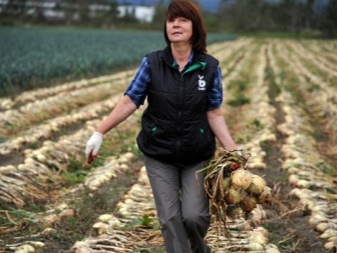
Leaving the onions under the negative influence of rain will result in poor yield quality. The access of moisture to the root system should be stopped.
In this case, the procedure is completed a little later, when the heads increase in volume. This usually happens in the last days of July. In this case, the crop is harvested at the end of August. Professionals call the time for this - from the 20th to the 25th.
Russia is a fairly large country. On its territory there are areas where it is very hot in summer and warm in winter. In other regions, it is warm in summer, and subzero temperatures in winter, which greatly complicates farming.
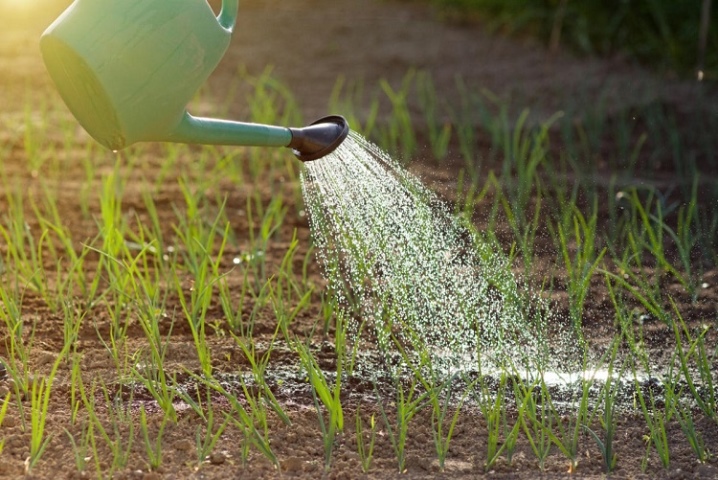
The collection of onion heads depends on the growing region.
-
In the south, warm weather sets in at the end of March - April. It is then that the planting of onions on the heads begins. For this reason, it is possible to harvest in the last days of June. Onions are watered in the southern regions until early June.
-
In the northern regions, it gets warm at the end of May - June. It is then that the onion is planted on the head. Watering onions should be completed in mid-July - early August, depending on the planting of the sevka. For this reason, the harvest should be dug at the end of August, and sometimes at the beginning of September.
Note! In the south of the country, you can harvest 2 bulbs per year. To get a large number of onion heads, you should select different beds for planting a vegetable. Before planting, the soil is dug up, adding a small amount of mullein. One area should be used for planting onions after 2-3 years. Otherwise, it threatens the development of dangerous diseases.
It is recommended to navigate in the refusal of the watering procedure by the lodging of the feathers.And also it is impossible to carry out the procedure when a constriction appears on the neck of the bow.
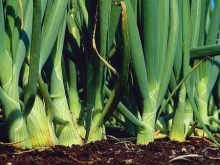
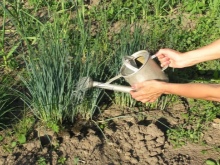
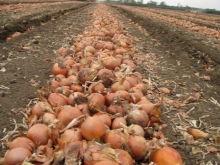
Professional gardeners recommend to give up watering gradually. At first, the amount of liquid is gradually reduced. They do it in a certain way.
-
From the moment the first shoots appear until the intensive growth of feathers, the plant is watered every 2-3 days.
-
When feathers increase in size, watering is carried out in hot weather every day. At a moderate temperature, water the culture after 2-3 days.
-
One month before harvesting, the amount of watering should be reduced by a third. Next time for watering, take half of the previous amount of water.
-
It is recommended to moisten the soil in hot weather 3 weeks before harvesting the bulbs. Otherwise, the heads will lose size and dry out.
-
Avoid watering completely a week before harvesting. This will help keep the heads dry and clean. Otherwise, they will rot, they will sprout again, which will lead to the loss of a significant part of the crop.
Advice! Water the onion with water that has settled during the day. Otherwise, the bulbs will not grow in size, feathers will give arrows.
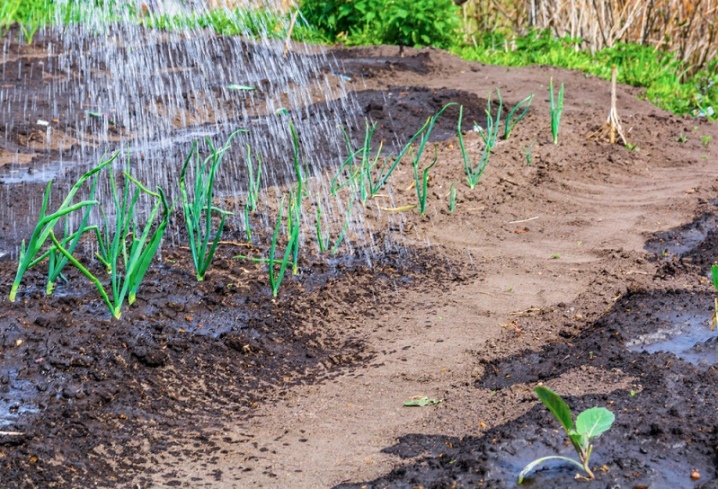
If the onion grows and the onions continue to pour, it should not be left in dry conditions. Otherwise, it will stop developing. Drought signals the vegetable to end the growing season. For this reason, the vegetable crop should be watered regularly.
Many gardeners recommend combining watering with top dressing. For this, fertilizer is diluted with water, and then the crop is watered. Watering should be done carefully, directly to the onion. Otherwise, it will negatively affect the feathers. They may turn yellow, leading to the end of the growing season.
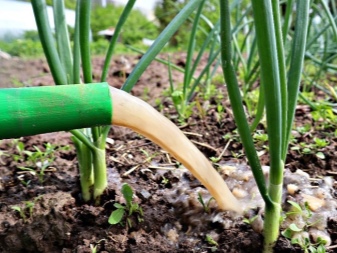

What happens if you continue?
Some gardeners think it's okay if you don't stop watering the onions a few days before harvesting. This is not at all the case.
If you don't stop watering your onion beds, you can run into a whole host of problems.
-
Onion feathers continue to grow abundantly, which negatively affects the size of the vegetable. It does not increase in volume, does not accumulate useful substances, actively getting rid of them.
-
The bulbs are of poor quality and the core is rotten.
-
With excessive watering before harvesting, the vegetable crop is exposed to the invasion of dangerous fungal diseases, which leads to the loss of the entire bulb.
At the first signs of decay, the bulb should be pulled out so that the disease does not spread to other nearby plants.
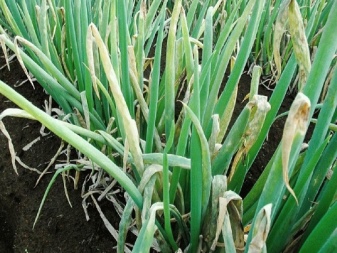
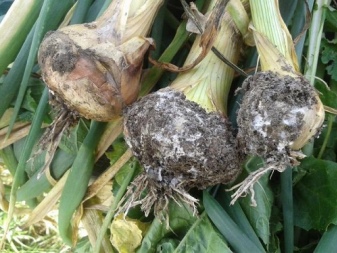
Dry the bulbs thoroughly after harvesting. To do this, they are completely laid out in the beds. The vegetable crop dries out with a sufficient amount of sunlight during the day. Onions should be removed overnight. The bulbs absorb moisture quickly. They can get damp during the night. This will lead to a new drying process. Otherwise, the bulbs may lose their attractive appearance, rot and become covered with a white coating during storage.
Onions are a fairly popular vegetable crop. It is added to many dishes. The vegetable is also used to improve health. In order to keep the heads in proper condition for a long time, it is recommended to dry them thoroughly before this. Otherwise, it will lead to decay of vegetables, loss of harvest.
To keep the onion for a long time, you should adhere to the rules of preparation for this process. It will be important to stop watering the onion beds 2 weeks before harvesting.
This will help you get a high-quality onion crop.
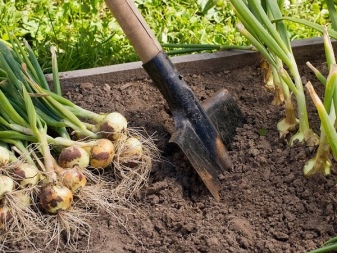
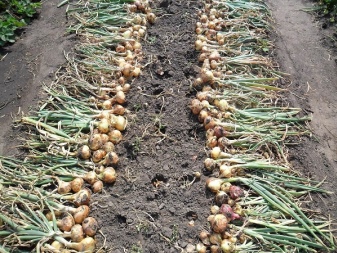













The comment was sent successfully.